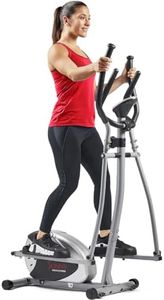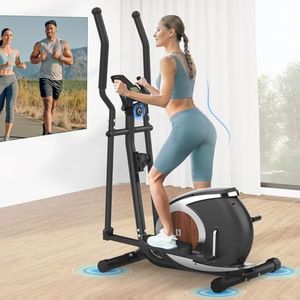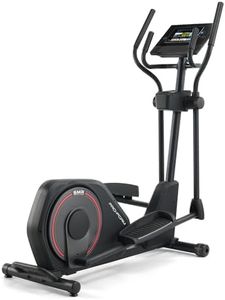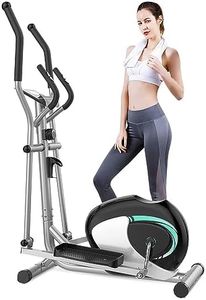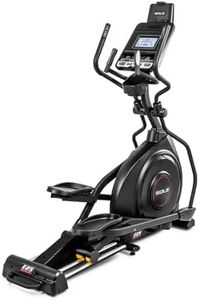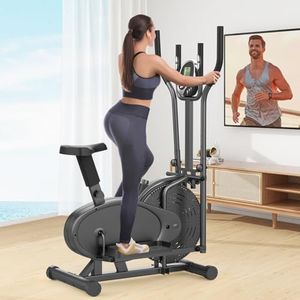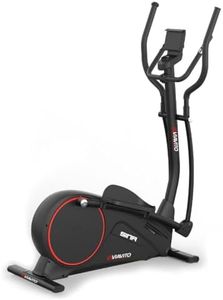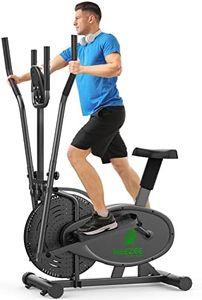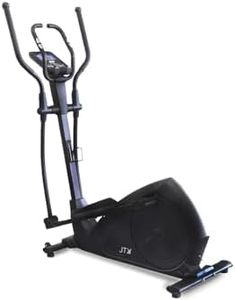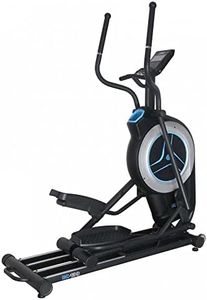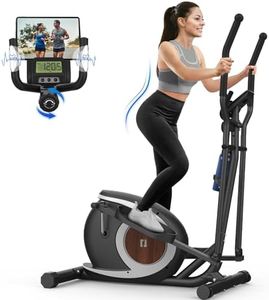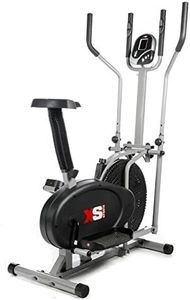We Use CookiesWe use cookies to enhance the security, performance,
functionality and for analytical and promotional activities. By continuing to browse this site you
are agreeing to our privacy policy
10 Best Elliptical Cross Trainer
From leading brands and best sellers available on the web.Recommended lists
Buying Guide for the Best Elliptical Cross Trainer
Choosing the right elliptical cross trainer can significantly enhance your workout experience and help you achieve your fitness goals. When selecting an elliptical, it's important to consider various specifications that can affect the machine's performance, comfort, and suitability for your needs. Understanding these key specs will help you make an informed decision and ensure you get the best fit for your workout routine.Stride LengthStride length refers to the maximum distance between the pedals when they are at their farthest apart. This spec is important because it affects the comfort and effectiveness of your workout. Shorter stride lengths (16-18 inches) are suitable for shorter individuals or those with a smaller range of motion, while medium stride lengths (18-20 inches) are versatile and can accommodate most users. Longer stride lengths (20-22 inches) are ideal for taller individuals or those looking for a more intense workout. Choose a stride length that matches your height and workout intensity.
Resistance LevelsResistance levels determine how challenging your workout can be. This spec is crucial for tailoring the intensity of your exercise and for progressive training. Basic models may offer 8-12 levels of resistance, which are suitable for beginners or casual users. Mid-range models typically provide 16-20 levels, offering more variety and challenge for intermediate users. High-end models can have 20+ levels, ideal for advanced users or those seeking a highly customizable workout. Consider your fitness level and goals when choosing the number of resistance levels.
Flywheel WeightThe flywheel weight affects the smoothness and stability of the elliptical's motion. A heavier flywheel generally provides a smoother and more stable ride. Light flywheels (10-15 lbs) are common in entry-level models and may be sufficient for beginners. Medium-weight flywheels (15-20 lbs) offer a good balance of smoothness and stability for most users. Heavy flywheels (20+ lbs) are found in high-end models and are ideal for serious fitness enthusiasts who want the smoothest and most stable experience. Choose a flywheel weight that matches your workout intensity and preference for smoothness.
Incline AdjustmentIncline adjustment allows you to change the angle of the elliptical path, simulating uphill walking or running. This spec is important for targeting different muscle groups and adding variety to your workouts. Some models offer manual incline adjustment, which requires you to stop and adjust the incline manually. Others have motorized incline adjustment, allowing you to change the incline during your workout. If you want to add more variety and challenge to your workouts, look for a model with incline adjustment that suits your preference for manual or motorized control.
Console FeaturesThe console features include the display and any built-in programs or connectivity options. This spec is important for tracking your progress and keeping your workouts engaging. Basic consoles may display essential metrics like time, distance, speed, and calories burned. More advanced consoles can offer heart rate monitoring, pre-set workout programs, and connectivity to fitness apps or entertainment options. Consider what features are important to you, such as tracking specific metrics, following guided workouts, or staying entertained during your exercise.
Weight CapacityWeight capacity refers to the maximum user weight that the elliptical can safely support. This spec is crucial for ensuring the machine's durability and your safety. Entry-level models may have a weight capacity of around 250-300 lbs, suitable for most users. Mid-range models typically support 300-350 lbs, offering more durability and stability. High-end models can support 350+ lbs, ideal for heavier users or those seeking a more robust machine. Choose a weight capacity that comfortably supports your weight and provides a stable workout experience.
Footprint and PortabilityThe footprint refers to the amount of space the elliptical occupies, while portability includes features like transport wheels for easy movement. This spec is important for fitting the machine into your available space and for storage convenience. Compact models are suitable for smaller spaces and may have a smaller footprint and lighter weight. Larger models offer more stability and features but require more space. If you need to move the elliptical frequently, look for models with transport wheels. Consider your available space and need for portability when choosing the right footprint.

